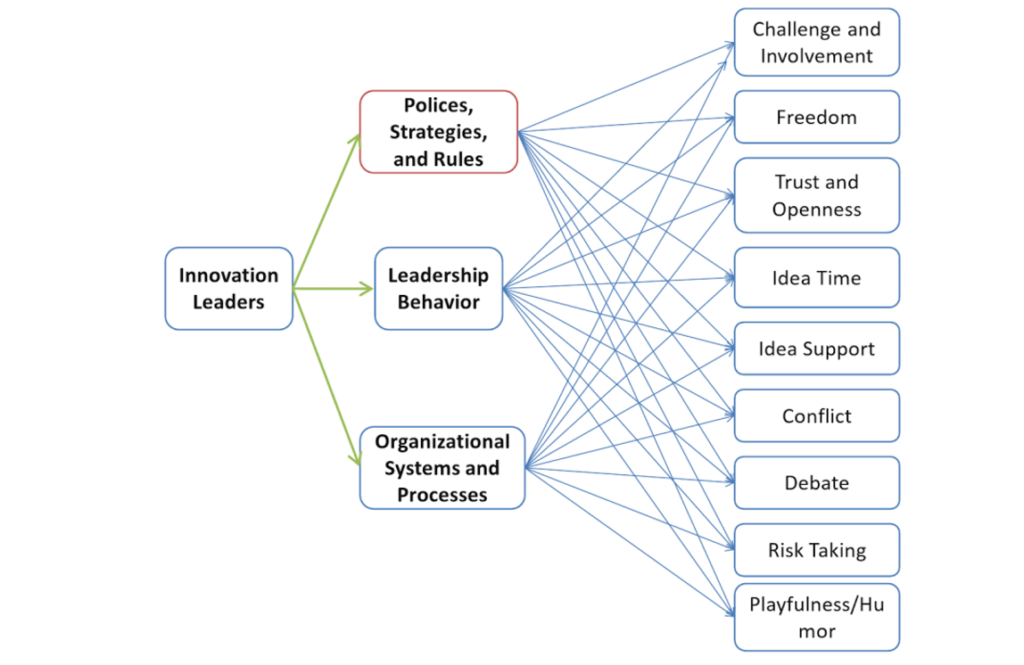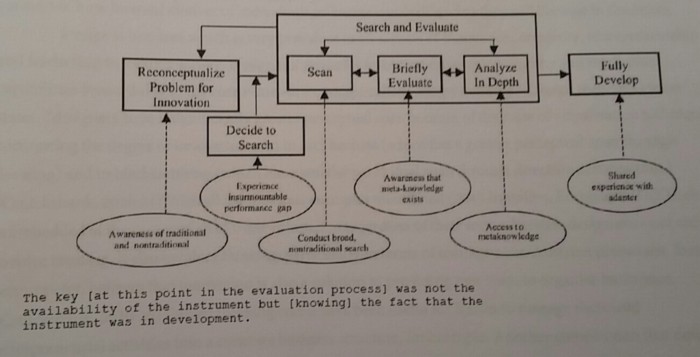It’s a natural order in the sciences, embedded in our most primitive instincts, to follow and to lead.
Mumford (1906) states, “It [leadership] arises wherever there are interactions of individuals or of groups, no matter what may be the purpose or aims of these interactions.” Leaders are those who lead people with an ultimate vision.
There have always been leaders and followers in our society, and one can examine this instinctual pattern through the earliest ages of child play. The strongest, most energetic and resourceful child will often take charge and the other children will follow. Strength in this case does not always imply physical strength, which we begin to see as we become older and enter into more complex situations.
“The primitive man follows the leadership of the mythical hero or the apotheosized ancestor with unswerving and unexamined loyalty, and his final answer to the perplexing questions of the the ethnological inquirer is: That is what our fathers said.” (Mumford, 1906)
Throughout the years, academics have looked at whether individuals are born leaders or made leaders — the conclusion to this is there are certain traits that leaders possess, yet different opportunities present different fates to every individual. The key traits of leaders are:
(1) drive
(2) leadership motivation
(3) honesty and integrity
(4) self-confidence
(5) cognitive ability
(6) knowledge of the business
Read more: http://bit.ly/2qgvAvQ
Furthermore, the authors Kirkpatrick et al (1991) write, “there is less clear evidence for traits such as charisma, creativity and flexibility.” Now to look at these traits and to think that someone with these traits will certainly become a leader is a premature thought. There are many factors that determine whether or not someone will become a leader, where environmental and internal motives are two of the very influential factors.
“Effective leaders must not only be full of drive and ambition, they must want to lead others.” (Kirkpatrick et al, 1991) However, what’s the correlation between leaders and innovators? The two are not always synonymous — in fact, most frequently not.
Research has shown that leaders play a pivotal role in establishing a climate for innovation, but are not necessarily the innovators themselves.
So then, what is the core job of a leader? The core job is to create a vision, communicate that vision, and to develop a strategy that achieves it. Kirkpatrick et al (1991) suggest that, “Effective leaders must promote change and innovation. The vision, since it pertains to a desired future state, is the starting point of change.” Another important job of the leader is to utilize his power towards an ultimate social or economic gain, rather than as an end result. This is called “Socialized Power Motive” and in this case it is utilized to achieve a vision while also maximizing a positive impact for others working on the same team towards the same goals.
A great example of “Socialized Power Motive” would be a leader organizing a multi-disciplinary group of individuals to work within various fields in order to achieve a socially impactful and innovative result. For example, Dmitry Itskov, president of the 2045 Initiative, established an organization that works with the world’s leading scientists, technologist, entrepreneurs, spiritual leaders, futurists and philosophers working on a new model of development, “a model capable of changing human consciousness and giving new meaning to life,” commonly known as Project Avatar.
The vision in this project concerns human consciousness living past our human bodies and Itskov communicates this vision on multiple platforms as he establishes a strategy with specific goals, timelines and benchmarks to follow. Whether there is an actual outcome of this 2045 vision is questionable, but certainly the social motive behind Itskov’s intentions are present. Itskov’s vision of creating the Human Avatar has touched on one of the most sensitive and “unsatisfied demand” topics — immortality. As broad and fantastical as it may (or may not) currently seem, his project incorporates all elements of leadership, entrepreneurship and innovation needed to get a team of leading societal figures on board, and act through intrapreneurship. Each member acts an entrepreneur in his own right, reaching out across different fields of interest and research in order to fulfill the needs of the project.
But wait, is it possible for there to be too much entrepreneurship within an organization?
In the case of Enron, an American Energy, Commodities and Service Company that went bankrupt in 2001, this is exactly what happened. Formerly, pronounced as “America’s Most Innovative Company” for six consecutive years by Forbes Magazine, Enron was a large organization that had difficulty managing and overseeing its employees’s entrepreneurial tendencies, despite its successful growth over the years. Furthermore, the leaders of the company persisted to keep expanding the business without clear oversight of the whole company and its employees. In example, when then-president Mr. Skilling was asked about a particular sector of the company (EnronOnline), which was initiated by one of his employees and had already gone under legal review in 22 different countries, Mr. Skilling was unaware that it even existed. His only response was “This [employee’s initiative] is exactly the kind of behavior that will continue to drive this company forward.” (Birkinshaw, 2003) Enron began as the “Best Gas Distribution Company”, which shortly then became the “World’s Best Energy Company”, finally expanding its title to the “World’s Best Company”. This shows that the company encouraged entrepreneurship and autonomy in its company, valuing its speedy growth and involvement in the different sectors of the industry; however it caused major fundamental problems which led to its demise.
There are four components that Birkinshaw (2003) mentions (referencing the advice of Mr. Chase, chief executive of BP) that can regulate, guide and control entrepreneurial action. These are: (1) direction, (2) space, (3) boundaries, and (4) support. See Figure 1 below.
Direction is important because it keeps the company’s strategy in check. Many companies sometimes find that their desire for growth may swerve them away from their initial plan or strategy, making them vulnerable due to changes in objectives. A lack of direction can risk a company’s movement away from traditional business to solely high growth business, completely abandoning and losing focus on their revenue origins or beginnings. Birkinshaw (2003) remarks that, “At Enron, the best people gravitated quickly toward the high-growth opportunities away from the traditional businesses. Not a bad way to go, one might argue, except the traditional businesses were the ones with secure franchises and positive cash flows.” The right amount of space is important because too much space is dangerous, and too little space is also dangerous, not allowing the proper environment for innovation and autonomy. An example of space is allowing employees to notice mistakes they’ve made by themselves in enough time to fix the problem and learn from it. Boundaries are important because without them, many would begin to act corrupt or aggressive, which in the case of Enron, the company “failed to check its “creativity” with an equal commitment to integrity” and began to hide debt and act pompous in partnership agreements. (Schuler, 2002) Finally, support is crucial in that with the right amount of support, there is encouragement and motivation to improve. BP achieves support through the establishment of peer groups, where executives of each group are encouraged to share, collaborate and provide commentary to other groups in the hopes to improve, succeed and facilitate the work. (Birkinshaw, 2003)
Figure 1: A Model of Corporate Entrepreneurship (Birkinshaw, 2003)

So what’s the point of all of this?
Leadership guides innovation and sets the right environment for future success, creativity and sustainability, however entrepreneurship needs to be checked and so do wrongful or misguided power motives. In a study done by Akkermans et al (2008), a Situational Outlook Questionnaire (SOQ) was distributed to measure the organizational climate of innovative organizations. See Figure 2 below. The authors state that, “The analyses indicated that individuals who perceived their organization to be more successful at innovation reported significantly higher mean score on the eight positive SOQ dimensions (and significantly lower means scores on the Conflict dimension.)” That meant that (1) challenge/involvement, (2) freedom, (3) trust/openness, (4) idea-time, (5) playfulness/humor, (6) idea-support, (7) debate and (8) risk-taking were optimally important, but within boundaries however (as previously mentioned.) Furthermore, the authors of this study found that there was a significant relationship between leadership and innovation, however, when the right type of climate was removed from the scenario, the relationship between the former and the latter dropped significantly. (Akkermans et al, 2008)
Figure 2: Leadership-creative-climate model (Benlamri et al, 2017)

Another motivational factor behind innovation is increased communication between the leaders and the employees, based on the Leader Member Exchange Theory (LMX). The authors study showed that “the higher the level of interaction between leaders and subordinates, the higher the perceived climate of innovation.” (Akkermans et al, 2008) LMX states that the relationship between a manager (or leader) and subordinates goes through three stages: (1) role-taking, (2) role-making and (3) “routinization”. The first stage of role-taking is when the subordinate gets into the daily routine of his position, fulfilling the tasks which were assigned to him. The second stage of role-making is when the leader decides where to place his subordinates — the in-group or out-group — depending on the level of trust the leader has established for his subordinate. The final stage is the most crucial stage for action to be taken by the leader towards the out-group members, because this is the time when these members may start to dislike their leaders and lose motivation. Mentoring and task allocation are the most important actions a leader can take at this stage in order to keep a positive atmosphere within his or her company.
It is important to remember that everyone comes into a company, whether big or small, with a dream.
There are methods in which leaders can provide adequate space for their employees to reach out, explore and innovate. The more rigorous and traditional hierarchies limit employees’ flexibility and creativity. At the end of the day, leaders are the ones that decide the structure of the company, because this is part of the company’s vision.
Philip Kotler, leader in marketing thought, believes that leaders should have a “keen mind” and “above average intelligence,” rather than genius, in order to make good judgments and “think strategically and multi-dimensionally.” (Kirkpatrick et al, 1991) The key word in this case is “multi-dimensional,” especially because it best identifies with our complex and fast-changing environment.
Is the ability to think multi-dimensionality a prerequisite for innovation?
The answer is yes. Cooper et al (2004) state that “research on innovation diffusion, new product development, creativity and how people re-use knowledge when innovating comes to an opposite conclusion: divergence and lack of shared experience are critical for developing new ideas.” This means that in order for innovation to occur, there must be a multi-disciplinary approach and employees should reach out beyond their focal domains in order to gain new experiences and develop new ideas. See Figure 3, below. Hargadon and Sutton (1997) suggest that is why IDEO is so successful and productive in coming up with new innovative ideas. In fact, product development depends on the re-use of knowledge and past artifacts. This is known as “knowledge re-use as replication” (KRR) or “knowledge re-use for radical innovation” (KRI), where innovators re-use knowledge that was previously unknown to them, in order to find solutions to problems and invent new innovative products for humankind. Many scientists and technologists utilize this process of KRR, or KRI, to develop new technologies for space exploration, i.e. studying dust devils on Mars. One group of scientists thought about the utilization of traditional radars used in airports as a way to measure the timing of dust devils arrivals on Mars. This idea gave rise to the novel usage of LIDAR, Laser Imaging Detection and Ranging, to study activity on Mars. The model of “Knowledge Reuse Process for Innovation” can be seen in Figure 4, below.
Figure 3: A process model of how innovation occurs through technology brokering (Hargadon & Sutton, 1997)

Figure 4: Model of Knowledge Re-use Process for Innovation (Cooper et al, 2004)

The term “radical reconceptualization” is the term used when a leader develops a “challenging vision” that guides and excites his subordinates to innovate.
(Cooper et al, 2004)
In this case of innovation, it can be both technological and non-technological, and is defined as “the implementation of a new or significantly improved product or process, a new marketing method, or a new organization in business practices, workplace, organization, or external relations,” by the Oslo Manual, Organization for Economic Cooperation and Development. (Cruickshank, 2010) The Oslo Manual also states that innovation is at the heart of a knowledge-based economy, management and intangible investment. (OECD/European communities, 2005) This is a key concept for small business/high-growth management teams, because there are also innovative ways to run a business.
In his book, “The Economics and Management of Small Business: An International Perspective,” Bannock (2005) uses the terms “entrepreneur” and “small business owner” interchangeably. After all, going back to the example of IDEO, former CEO David Kelley began to build IDEO with only a few of his friends from Stanford University out of a one-room office in Palo Alto, California. Now, the company is both an economic and social success, ranking in the top 25 most innovative companies and employing over 500 people in varying disciplines from industrial and communication design to software engineering. Like IDEO, every small company has the ability for high growth, due to nimble and flexible structures and an air or entrepreneurship (or intrapreneurship), which promote knowledge growth and economic advantage. Times like economic recessions rely on entrepreneurs and innovation to help build ideas, services and products to resolve societal issues. However, not all small companies innovate or are growth businesses, partly because they do not aspire to those thing and prefer to stay local and small. Their leader’s internal motives make that decision, typically at the onset of the business.
Outside of thinking multi-dimensionally, what about design thinking? Is it the same thing?
Yeah. Design is one area which is very prevalent in all aspects of innovation, creativity, entrepreneurship and leadership. Design is a powerful force that drives our economy and intellectual capabilities forward due to the core values in a concept called “design thinking.” Design theorist Lawson states, “designers have a significantly greater perceptual span because of their use of visualization techniques, contrasting the degree of innovation seen in architecture (which has a greater perceptual span through drawing) and in blacksmithing (which has a smaller perceptual span through direction construction.) (Cruickshank, 2010) With all the previous examples mentioned, like 2045 Initiative, Enron and IDEO, design is at the center of all of these companies regardless of their sector, because design does not only involve creating, it also involves thinking, particularly in terms of management (although, let’s admit, Enron could have/should have thunk a little harder.) Austrian economist, Joseph Schumpeter, believes that innovation is a solution to providing new ways to organize businesses. Design thinking could have been useful for Enron to manage their wild entrepreneurial activities into a concrete business structure, for example. Another contribution that design has brought to innovation is creating the foundation for “open innovation.” Open innovation is “a business model that allows for profitable and sustainable business practices that use the sharing of ideas and information to maximize innovative potential.” (Cruickshank, 2010) The key word in this definition is sustainability, which is currently the ongoing focus in design thinking.
Many leaders are catching up with the current context of our complex, design and product-oriented world and are seeking opportunities to innovate and lead accordingly. The relationship between leadership, entrepreneurship and innovation is strong these days, hence the rise of start ups, because leaders and entrepreneurs are becoming more aware that success is achieved through multi-disciplinary practices and sustainable thinking. More people are seeing opportunities and moving away from traditional practices and hierarchies. Even specialists in their own field, begin to create visions within their own practices rather than follow the vision of others, and work to fulfill certain objectives to remain autonomous and passionate (with their soul intact). Everyone has their own dreams, and many are now choosing to not stray from that. Author Cruickshank (2010) further suggests that, “allied to open innovation is an analysis and recognition of innovation in which users, rather than innovation professionals (i.e. scientists, R&D, product engineers, and so on) take the lead…”
So, what is the role of leadership and how is it tied to entrepreneurship, small business high-growth development, and the utilization of innovation?
The answers have been laid out throughout this read, however to summarize this all, Mumford (1909) says it best in his thesis called “Origins of Leadership”, as he states that leaders not only act as initiators of needs and wants, but they can also be the “inventor, investigator, discoverer and agitator,” as well as the coordinator, guide and counselor for all activities that take place in our social life. Not all leaders are entrepreneurs, and not all entrepreneurs are leaders, and furthermore, not all leaders and entrepreneurs are innovators, but they all have a responsibility to fulfill. And in order to fulfill that responsibility, leaders must set the right environments, entrepreneurs must identify the gaps for societal needs, and innovators must choose (or establish on their own) the right climate to do their work.
Leadership is a vision, entrepreneurship is a direct act on opportunity within societal and economic gaps, and innovation is a unique creation or thinking that has the ability to change the world and how we live. The right climate or environment within an organization is proven to be one of the most pivotal factors as to whether or not innovation will ever occur within that company. It also affects a thing or two about the likelihood of long-term and stable success.
So do it. Do it now.
Start recognizing that there is a science to conduct your work, and stay mindful and alert. And if you’re a leader, I’ll leave you with a quote by Martin Luther King Jr.
“A genuine leader is not a searcher for consensus but a molder of consensus.”
Build your path and make sure your team is linked at the hip (in terms of teamwork and spreading out yet always coming back in) to fulfill a vision, with the right amount of space, direction, boundaries and support.

